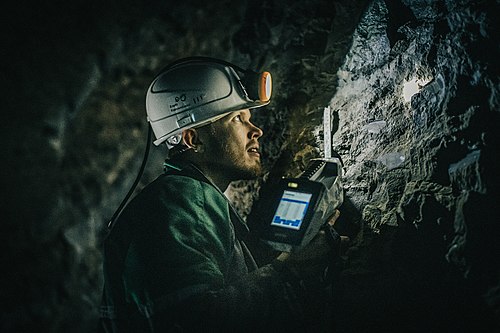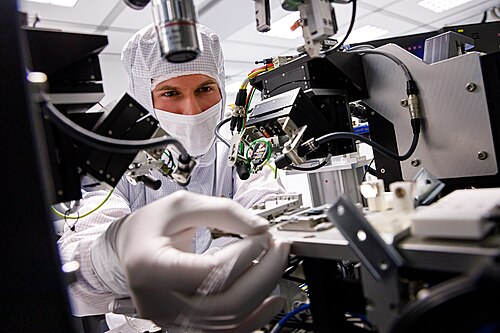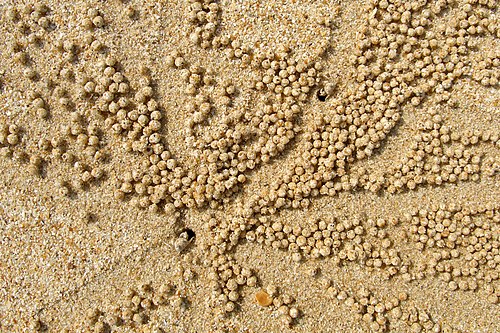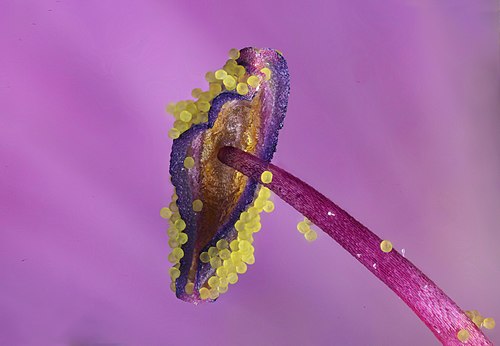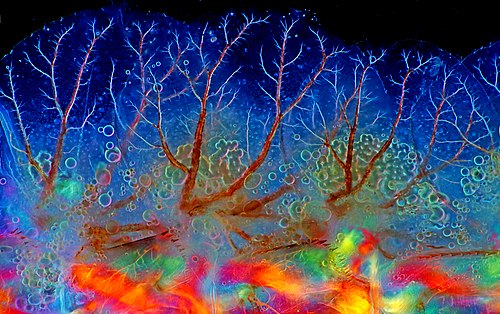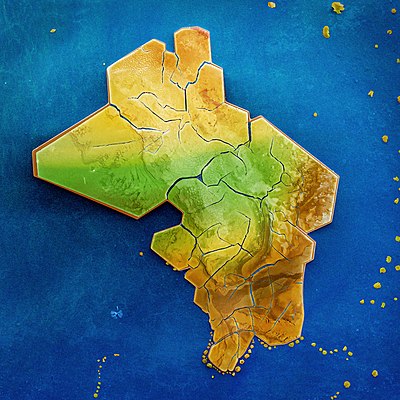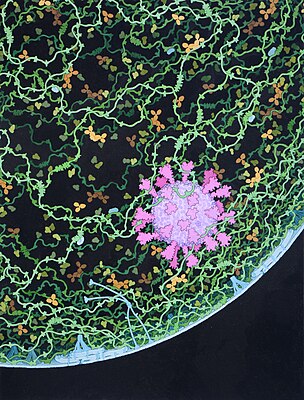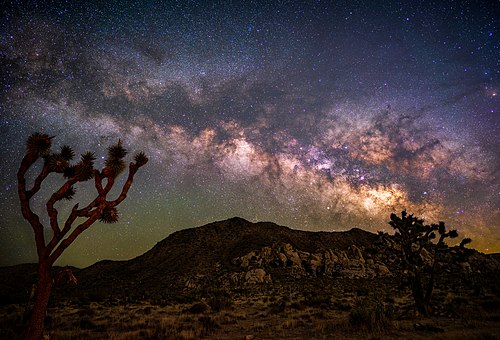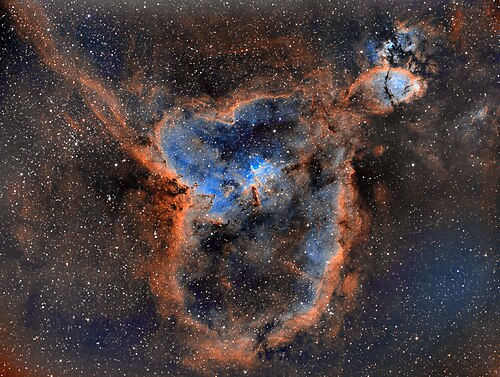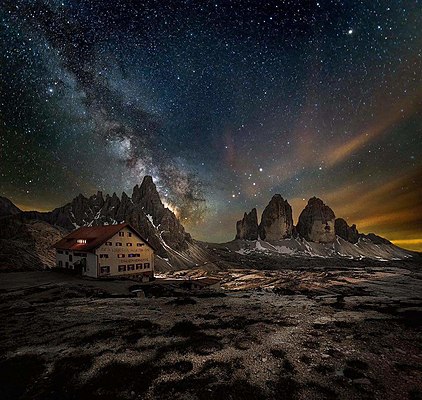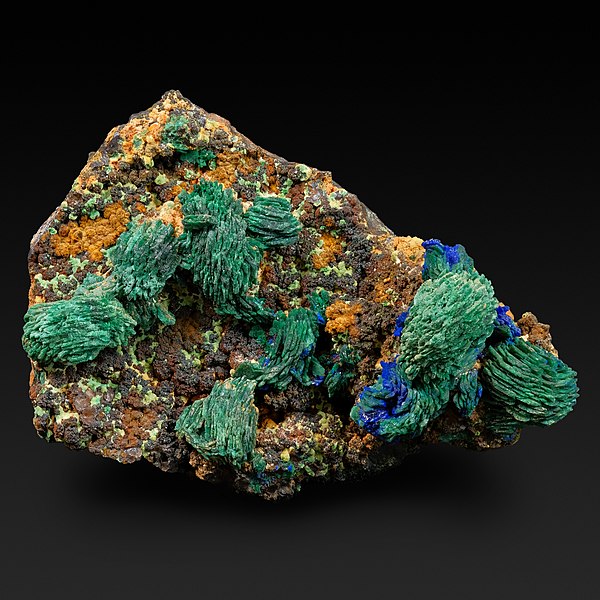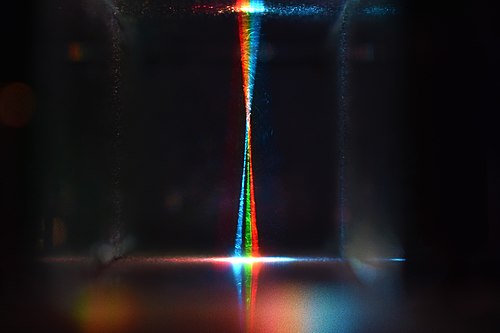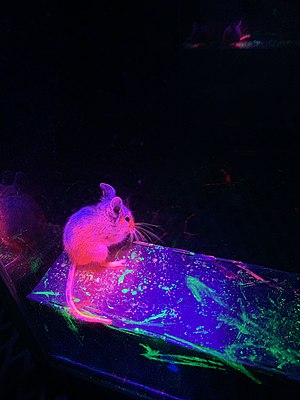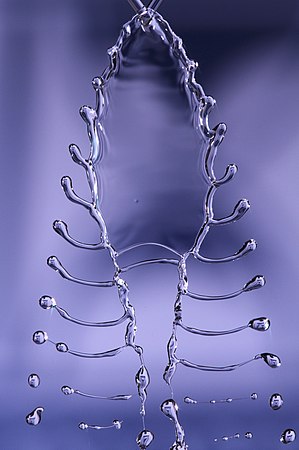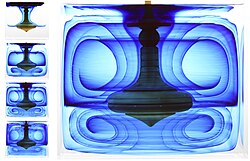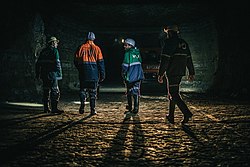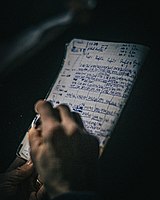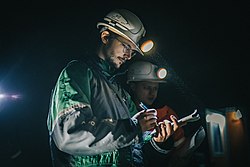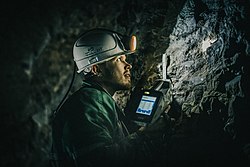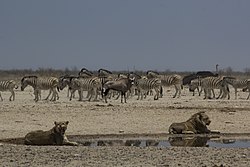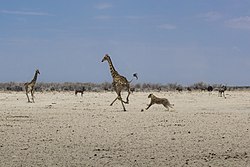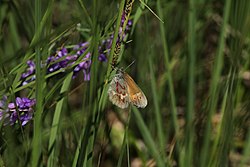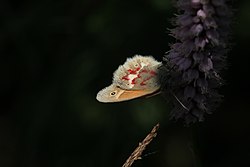Commons:Wiki Science Competition 2021/Winners
Evaluation process
[edit]For more information about the selection procedure please go here.
National finalists
[edit]In this table you can find all information about national finalists (and eventually, national winners) of WSC2021.
Click on these page to know all information related to local jurors, timelines and finalists.
Estonia · Finland · France and Monaco · Ireland · Italy · New Zealand · Macedonia · Poland · Russia · South Africa · Spain · Switzerland · Thailand · Ukraine · United States ··· The rest of the World
Second international round
[edit]The national finalists are selected in an intermediate round focused mostly on the originality and the image quality.
- Some categories (non photographic media, set of images) were processed with a xls file, and a different scale was used where all the jurors gave votes 10 (best) to 1 (worst) to their first ten choices. Files that were not selected by the jurors were assigned "0.0". The 10-12 voted choices are shown.
Similarly to Wiki Loves Monuments, international and national juries can show different taste, especially when some juries are small. For this reason it possible that some second finalists are given a higher ranking than the national winners at the international level.
Winners
[edit]The final winner and 4-6 runners-up were finally selected out of a final brainstorming from the finalists after the intermediate round, with some minor rearrangement based on
- the quality of their scientific description;
- the resolution and the presence of technical and scientific details;
- specific strong criticism by jurors or the academic committee (e.g. very common idea);
- use by Wikimedia community (as of October 2022);
 Used on other Wikimedia platforms[1]
Used on other Wikimedia platforms[1] Featured file
Featured file Quality images
Quality images Valued file
Valued file
- excessive similarity to the winners and runners-up of the previous edition;
- a final balance of subjects and themes.
Please notice that in order to maximize the chance of every file, and due to specific taste of national and international juries, some files are categorized twice.[2]
People in Science
[edit]
Images showing scientists at work in the field, and specifically in wild areas, are usually appreciated in this category, and this file is no exception. This image captures the concept of team effort behind an expedition, presenting the complexity of the human factor and the structured teamwork. The natural environment under study is correctly presented in the snapshot but, thanks to its relative homogeneity, it does not deflect too much attention to the boats, where all the different equipment are displayed. |
|
My name is Olena Bilous and I am a young scientist. My research deals mainly with aquatic ecosystems. More specifically, its main focus is the investigation of algal diversity, as well as the nomenclature, taxonomy, ecology, and geographical distribution of such organisms. In the photo, you see me and my colleagues working on a scientific project whose main focus is the description of the interactions between aquatic plants and cyanobacterial blooms in freshwater reservoir ecosystems. It is believed that aquatic plants inhibit or reduce the development of cyanobacteria (blue-green algae), and we monitor the phenomenon in specific ecosystems. The boats are standing in Kyiv Reservoir during the period of cyanobacterial water bloom, in a cluster of aquatic species called water caltrop (Trapa natans L.) and yellow waterlily (Nuphar lutea (L.) Sm.). You may observe how we usually collect samples in the water body for further analysis in the laboratory. During such field trips, we also perform some simple measurements of physicochemical parameters of the water (temperature, pH, dissolved oxygen, conductivity, salinity and Total Dissolved Solids (TDS)) in each sampling site. They are measured using multifunction device AZ-86031 (AZ Instrument corp., Taiwan). A complete hydrochemical analysis is done later in the laboratory, where I also identify species of algae under the microscope. |
| International runner-up | International runner-up | |||
| Investigation of active Coulomb systems in colloidal plasma. |
Geological fieldworks in the Estonian underground oilshale mine. |
|||
| International runner-up | International runner-up | |||
| Students in the limestone fields, looking for fossils. |
Women of the FMN Laboratory team acquiring SEM images of manufactured devices. |
|||
| International runner-up | International runner-up | |||
| FMN Laboratory researcher in the process of assembling a neuromorphic processor based on a photonic integrated circuit. |
Study of geological samples. |
|||
Wildlife and Nature
[edit]
|
Text.
|
| International runner-up | International runner-up | |||
| Fern sorus of Polypodium aureum. Luminescence at 365 nm excitation spectrum. |
Drone view of hexagonal basalt columns in Stuðlagil canyon in Iceland. |
|||
| International runner-up | International runner-up (temp) | |||
| A snowflake dangling on a spider web. |
Water droplets on insect wings. |
|||
| International runner-up | International runner-up | |||
| Gecko's foot from underneath. |
Sand balls made by sand bubbler crab on the beach of Koh Yao Noi island. |
|||
Microscopy images
[edit]
|
My name is Karl Gaff (artofsciencephotography.com) and I am a professional microscopist and scientific photographic artist from Dublin, Ireland. I am an applied physicist in the School of Physics, Clinical and Optometric Sciences at TU Dublin where I manage the advanced labs for experimental physics. In my free time however, I carry out all of my photographic work from my home studio in South Dublin. My love for science and nature began in my early life when I was around six or seven years old when I received my first microscope. Albeit a toy, I was mesmerized by my first glimpse through the eyepieces. An invisible world opened up inhabited by millions of tiny animals and single celled creatures, swimming and feeding, totally unaware that they were being watched. It was an epiphany for me. I would spend all my summer holidays from school collecting and looking at parts of plants and their flowers, exploring ponds and swamps and collecting jam jars of samples from them with excitement. Still to this day I get excited by doing that! At the time, the microscope was incapable of having a camera adapted to it. Of course, as I look back, it would have also been far from capable of producing the dazzling imagery that I am used to today. There are a couple of aspects of photomicrography that captivate me. Experimentation with chemical alchemy is one of my hot topics. I am greatly interested in researching and experimenting with chemicals. My research in my laboratory leads me to the synthesis of chemical ‘potions’ which when crystallized and viewed through the polarising microscope reveal the wizardry of Nature. Peering through the microscope, you witness before your eyes, the spontaneous emergence of visually stunning patterns unfolding and evolving out of an otherwise transparent soup of chemicals. Taking on a resemblance to forests, knotted vines, colourful flower gardens or complicated geometrical self-assemblies. The science of it all, the orchestration of quantum mechanics with thermodynamics and how all science is entangled, it really blows my mind! On witnessing these events through the microscope, it is easy to recognise how nature is written in the language of physics and mathematics! Life never gets boring, because when the chemistry doesn’t go to plan due to factors out of my control, I turn my attention to photographing creatures from the pond. The midge fly larva, seen here, is my first attempt at creating detailed panoramas of pond creatures. The larvae of midge flies have to be the most exciting and fascinating creatures that I enjoy photographing through the microscope.
|
| International runner-up | International runner-up | |||
| Anther and pollen of a sticky geranium, Geranium viscosissimum. |
Lipid islands and some instances of thin film interference on a soap bubble at 250x magnification. |
|||
|
| ||||
| International runner-up | International runner-up | |||
| Thin crystalline film of caesium chloride imaged in compensated polarised light microscopy. |
Tracheae and tracheoles in mayfly larva gills . |
|||
| International runner-up | International runner-up | |||
| A micrograph of a nanostructured silicon image. |
Polyphemus, a kind of predatory cladoceran with eggs . |
|||
Non-photographic media
[edit]
The invention of Wilson's cloud chamber was a crucial innovation in the field of atmospheric science and later in the field of experimental particle physics, due to its use as particle detector for visualizing the passage of ionizing radiation. Its inventor Charles Thomson Rees Wilson was awarded the Nobel Prize in Physics, but he is probably less known compared to other laureates. This file brings attention to it, and the more curious reader can start to navigate this topic and discover more about the history of physics. The video is short and also effective in the choice of accompanying music, making the explanation even more structured. The apparatus is also presented with a dedicated focus on its main components, raising curiosity about the science behind it. |
|
My name is Maxim Bilovitsky and I am a science popularizer and video blogger from Estonia. For some of my videos on radioactive elements, I wanted to visualize radiation, so I decided to use the well-known cloud chamber. For this experience, I took an ordinary kitchen pan and bought some dry ice along with a small glass fish bowl. After that, I fixed a few sponges soaked in ethanol to the bottom of the aquarium. I put the aquarium itself on a baking sheet cooled with dry ice, after which I waited about 15 minutes until the cold surface was covered with a layer of supersaturated ethanol vapor. As soon as the cloud chamber stabilized, it became possible to observe thin tracks from cosmic rays and background radiation in the ethanol vapor layer, but they were not very contrasting. For the best effect, I put several alpha sources in the chamber, for example, thoriated tungsten electrodes for TIG welding, as well as an americium source from a smoke detector. As soon as alpha particles began to fly out of the decaying radioactive metals, they began to ionize air particles in their path, while causing the supersaturated vapor from ethanol to condense behind them, creating the so-called alpha tracks. Tracks from alpha particles are very contrasting, but at the same time not very long, no more than 5 cm, since after hitting the gas molecules from the air, a heavy alpha particle loses all its energy and turns into helium. In addition to alpha tracks, in the cloud chamber one can also observe tracks from beta sources, which are much longer, but all the same, they are less contrasting, and therefore they can be poorly seen in a makeshift cloud chamber. For better visualization of the tracks of all possible particles, as well as cosmic rays, it is better to use industrial cloud chambers with a connected high-voltage source to remove excess ethanol drops at the bottom of the chamber. |
| International runner-up | International runner-up | |||
|
|
|||
| Divisions of ciliates Colpidium, phase contrast. |
Small colony of the Bryozoa Cristatella mucedo. |
|||
| International runner-up | International runner-up | |||
| Daphnia's heartbeat. |
Making thermal cards based on cholesteric liquid crystals. |
|||
| International runner-up | International runner-up | |||
| Cross section through a small respiratory droplet, like the ones that are thought to transmit SARS-CoV-2. |
Few spherical pre-synaptic vesicles that carry the neurotransmitter glutamate. |
|||
Astronomy
[edit]
|
Since as far back as I can remember, I've been interested in the stars, and some of my earliest memories are of looking up at the skies and asking my elders "why?" as kids tend to do. This is what led to me being a scientist. Since age 7, when I got my first telescope, I've been an amateur astronomer. In 1986, when Halley's Comet was visible, I was 13 and I learned to build my own reflecting telescope at that time, but technology wasn't good enough for the average person to capture images of what I saw. I was not a rich student in college so my hobby took a back seat, but once I began my professional career, I started using my disposable income to buy a lot of telescopes and technology finally caught up to enable amateurs to produce amazing images. All this took off in high gear when we moved to rural western New York on Lake Ontario in 2014, which has fairly dark skies. It was a few years of getting progressively better: I was a national finalist in 2019, but in 2020 I was able to produce some of my best images ever, which I submitted to the corresponding Wiki Science Competition. The Jellyfish nebula (IC443) is the name given to a galactic supernova remnant situated in the constellation Gemini about 5000 light years from Earth. In this image, the remains of a supernova that exploded prior to the dawn of the Julian and Gregorian calendars is coincidentally bookended by two bright stars in the frame. The narrowfield framing (S2, Ha, and O3 elements in red, blue, green) shows the partial shell of supernova remnant with its distinctive Jellyfish shape in the bottom right quadrant interacting with the molecular clouds surrounding it above and to the left, seemingly as though it is striking them with bolts of lightning. The interactions of the remnant with its surroundings all around are what give rise to its eponymous shape. Professionally, I am currently a computational biology and bioinformatics Professor at the University at Buffalo researching multiscale modelling of macromolecular structure, function, interaction, design, and evolution at multiple scales.
|
| International runner-up | International runner-up | |||
| Milky Way at California's High Desert National Park . |
Planetary nebula Sh2-216/LBN744/PNG158.5+00.7/PK158+00.1 (c-lsho) . |
|||
| International runner-up | International runner-up | |||
| Heart and Fishhead nebulae also includes: Cr30/Mel16/IC1824/NGC1027, IC1831, LBN646-48,50,55-57, and LDN1356,59-73. |
The comet NEOWISE C/2020 F3 and the bright meteor from alpha Capricornids meteor shower. |
|||
|
| ||||
| International runner-up | International runner-up | |||
| The Three Peaks of Lavaredo. |
Astrophotography of deep-space object Heart Nebula (IC 1805, sh2-190). |
|||
General category
[edit]
|
Maria Milshina is a collector and mineralogical photographer with extensive experience.By education, Maria is a power engineer, and she has nothing to do with mineralogy by profession. Since 2013, she and her husband started collecting minerals and it has become a big family hobby. Over time, the collection grew, and today it has more than 3,000 specimens. She started photographing minerals in 2018. Today, the main direction of her work is macro- and microphotography. The field of view of such images does not exceed 1-2 mm. She uses Fujifilm photocamera and lenses for mineral photography and microscopic lenses for macro and micro photography. Her photos repeatedly won prizes in the Russian competition of mineralogical photography “Minerals in the lens”, and in 2021 the work “Copper Paints” was highly appreciated by the jury members and received the Grand Prix of the competition. Today Maria is a professional mineralogical photographer. She often works with famous Russian mineralogists and illustrates their scientific articles and publications. Maria is also the author of her own mineralogical calendar, which has been issued for several years in a row. "I want to thank the jury for the appreciation of my work. For me it is very important, because it is the first time I won an international competition. I also congratulate all the winners and wish them further creative success!". |
| International runner-up | International runner-up | |||
| Additive colour mixing at the intersection of focused red (644 nm), green (532 nm) and blue (488 nm) lasers beam, visualised using graphite powder. |
The IceCube Laboratory in the South Pole Winter with the night sky in the background. |
|||
| International runner-up | International runner-up | |||
| Drone equipped with spectrophotometer intended for monitoring of anthropogenic pollution in freshwater bodies. |
The ALICE experiment at the LHC at CERN. The detector is opened for maintenance and upgrades. . |
|||
|
| ||||
| International runner-up | International runner-up | |||
| Tracking the movment of Peromyscus maniculatus with non-toxic fluorescent powder that glows under ultraviolet light. |
A set of Marquois scales, shown stored in their case with other drawing instruments (top) and on their own (bottom) . |
|||
Image sets
[edit]
Droplet impact is a phenomenon that occurs in many natural and technological processes, such as rain, ink-jet printing or spray cooling. Many factors can affect the splashing patterns, such as surface roughness, surface wettability, ambient pressure, and droplet compressibility. The beauty and the symmetry of the images highlights the technical skills necessary for the production of such media, and the very accurate description helps the reader to focus all these aspects |
|
I am a post-doctoral lecturer/researcher in the department of Mechanical Engineering at MIT. My research interests are in the areas of soft matter mechanics and fluid dynamics. Visualization of fluid phenomena is a great passion of mine. I often think about ideas that can help me visualize the hidden fluid patterns that are around us in our daily life but are either too fast or too subtle for us to notice. When a small water jet breaks up into individual droplets or collides into another jet the phenomenon happens in few microseconds which is too fast for human vision. Similarly, when we use a mixer and mix a liquid through rotation the fluid patterns are too subtle and rather invisible to our eyes. I explore these hidden patterns and make them visible to our naked eyes through methods such as high-speed flash photography or dye visualization. Inspired from Doc Edgerton (a giant in science photography), I use a high-voltage air-gap flash that releases a 20,000 volt arc in air in a fraction of a microsecond. By freezing time with the high-speed flash, all the fast and blurred patterns emerge still and clear in the image and we thus make the hidden underlying world visible to us. When it comes to visualization in science, I really like the following quote from Philip Roth: “Seeing is believing and believing is knowing and knowing beats unknowing and the unknown.”. When I teach fluid mechanics at MIT I strive to give students a chance to learn by seeing and naturally photography of fluid phenomena has become a life passion for me. It is also an activity in which art meets science and that always fascinates me. I enjoy sharing these pictures with the greater community and a channel such as Wikimedia and events such as Science Competition are amazing resources for us to share and also enjoy many different visions of science and art. |
| International runner-up | International runner-up | |||
| Rolling around a spinning top shown using dye injection. |
Geological fieldworks, underground in the Estonian oil shale mine. |
|||
| International runner-up | International runner-up | |||
| Cross-section of plant stems. |
Heads of different insects. |
|||
| International runner-up | International runner-up | |||
| Attack of a lioness on a giraffe. |
Adult of Common Ringlet (Coenonympha tullia) tagged by a number for a study using mark and recapture in the Drugeon valley. |
|||
Special SmartElectron prizes
[edit]Special prized by the EU-funded SmartElectron consortium. SmartElectron has received funding from the European Union’s Horizon 2020 Research and Innovation Programme under Grant Agreement No 964591
| SmartElectron Prize "women in science" | SmartElectron Prize "microscopy" | |||
| Students in the limestone fields, looking for fossils. |
A false-colour average of several images of the #fluorescence emitted by individual caesium 133 atoms. |
|||
Notes
[edit]- ↑ in main namespaces, ns0, that is content-related pages
- ↑ For example with have a new "wildlife and nature" category, but some landscapes are also considered under "general", similarly certain jury accept images in the "people in science" category where only a portion of the body is visible, so they are sometimes included in other categories as well at the international level.


